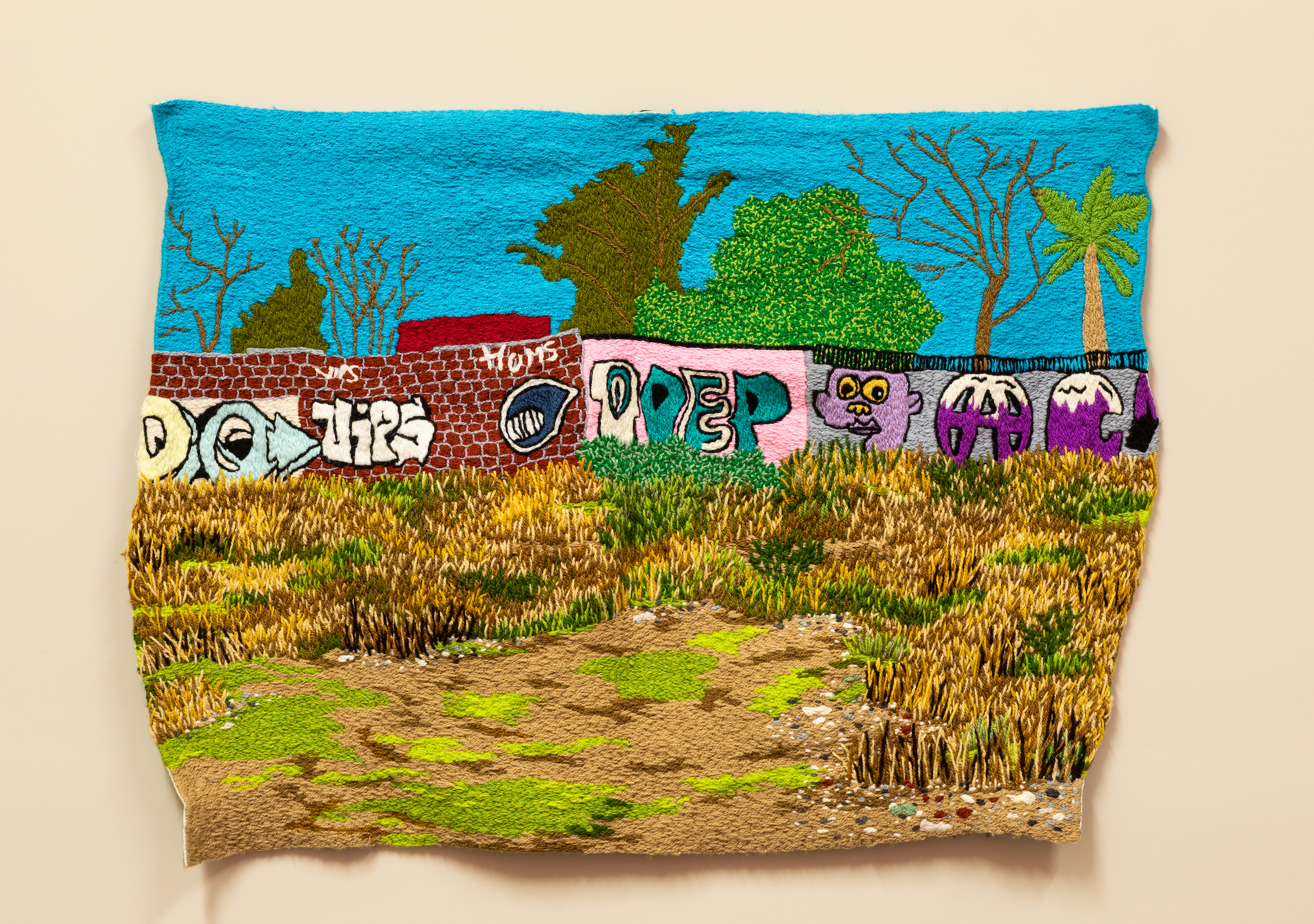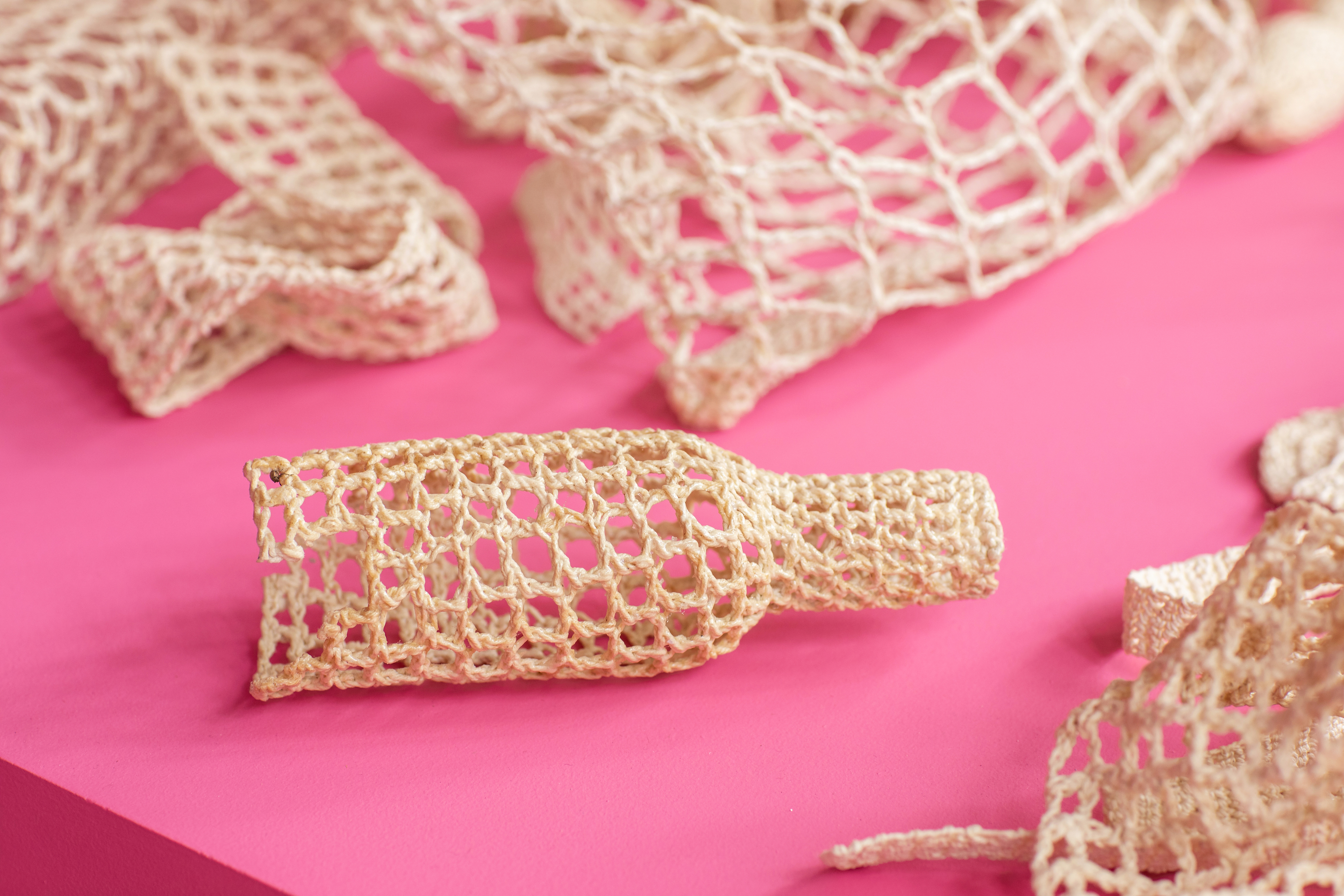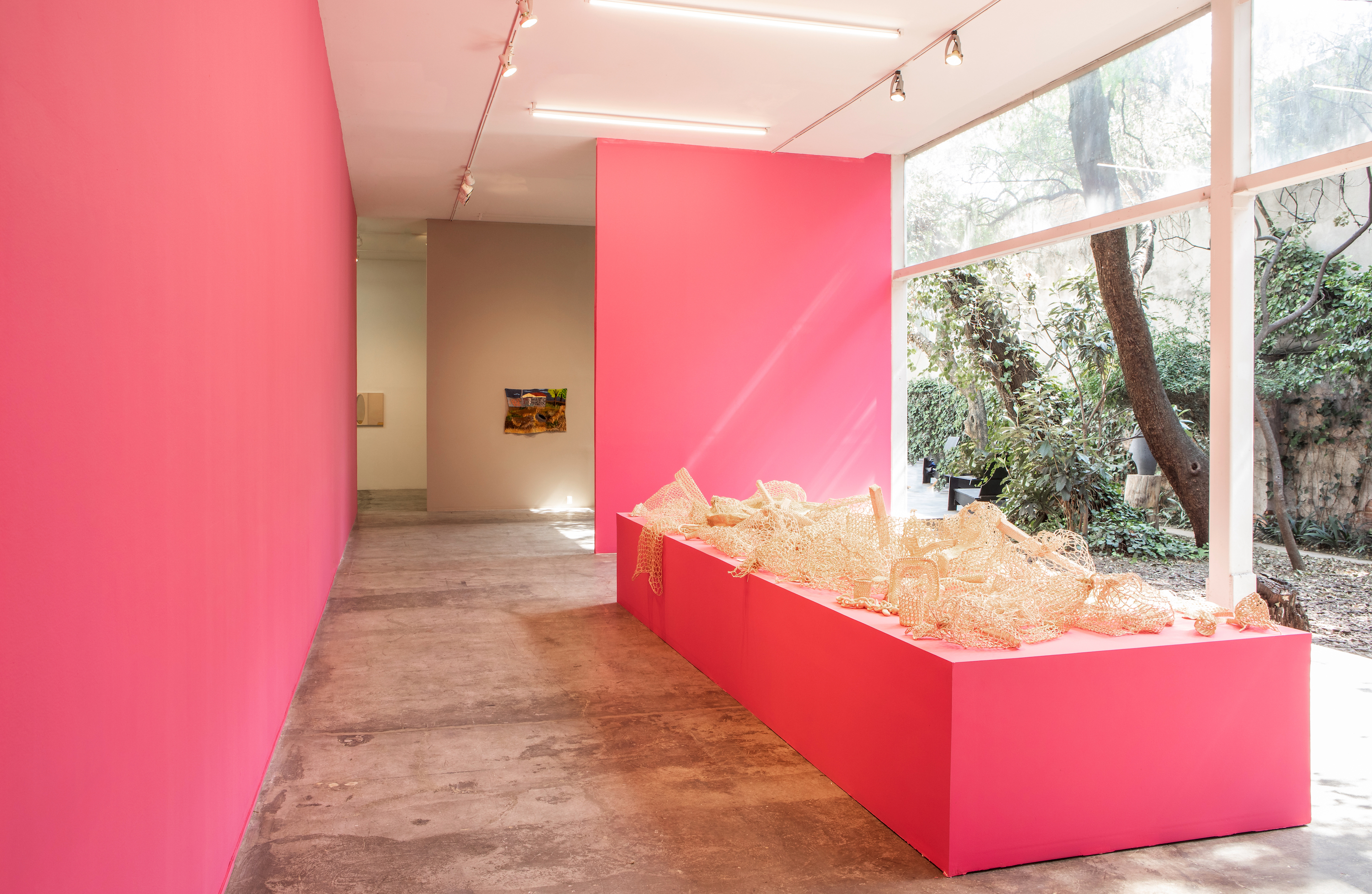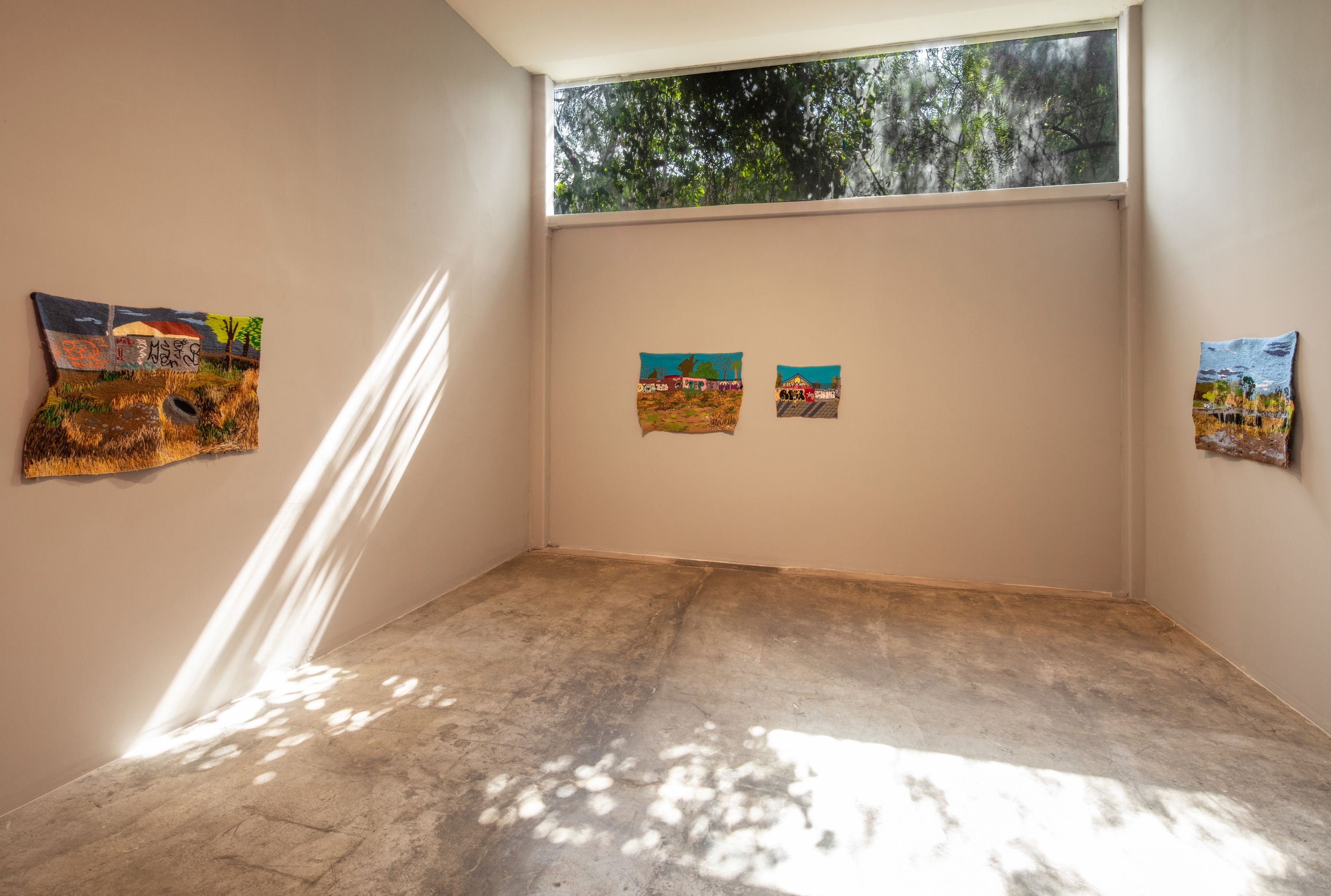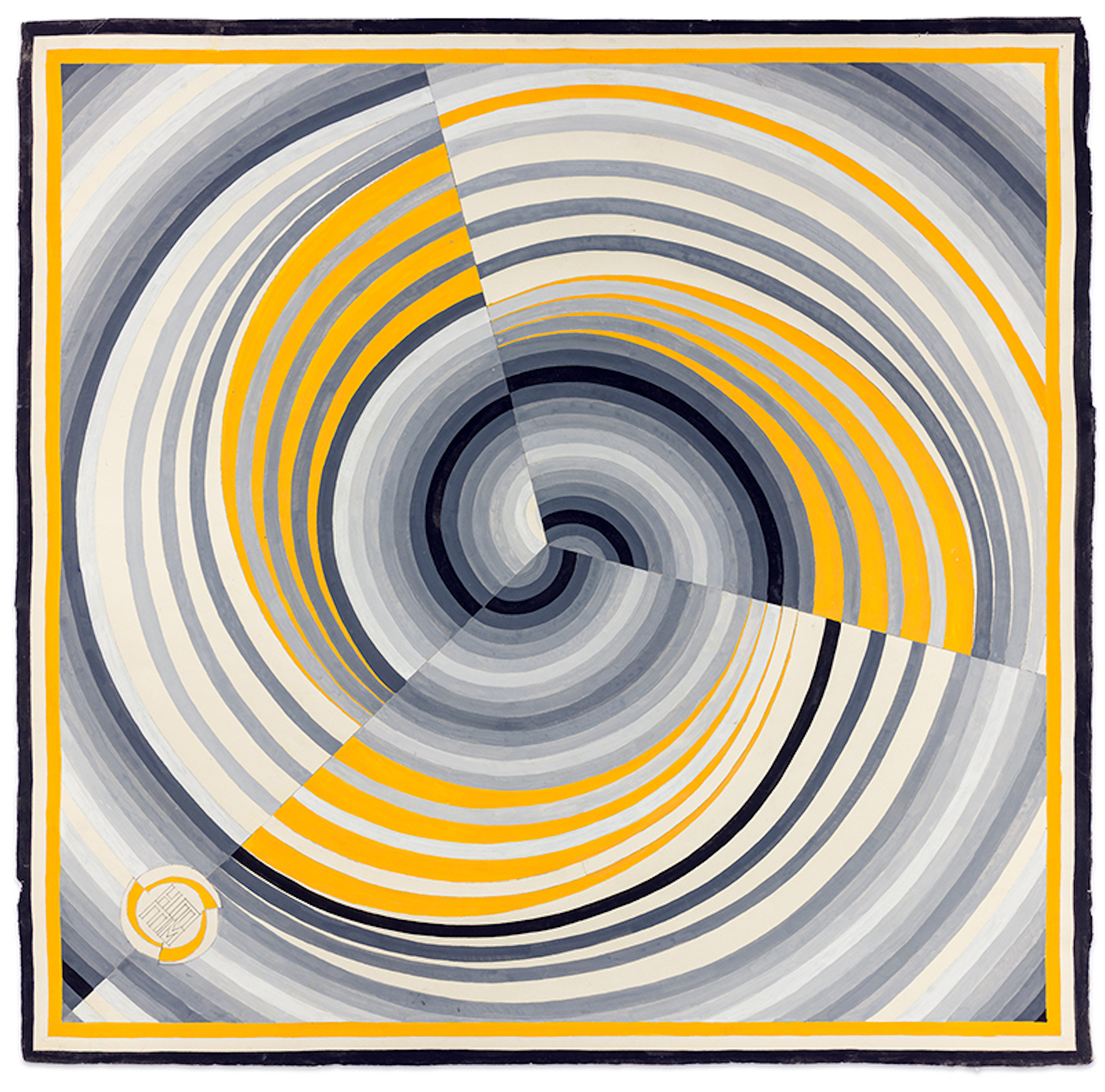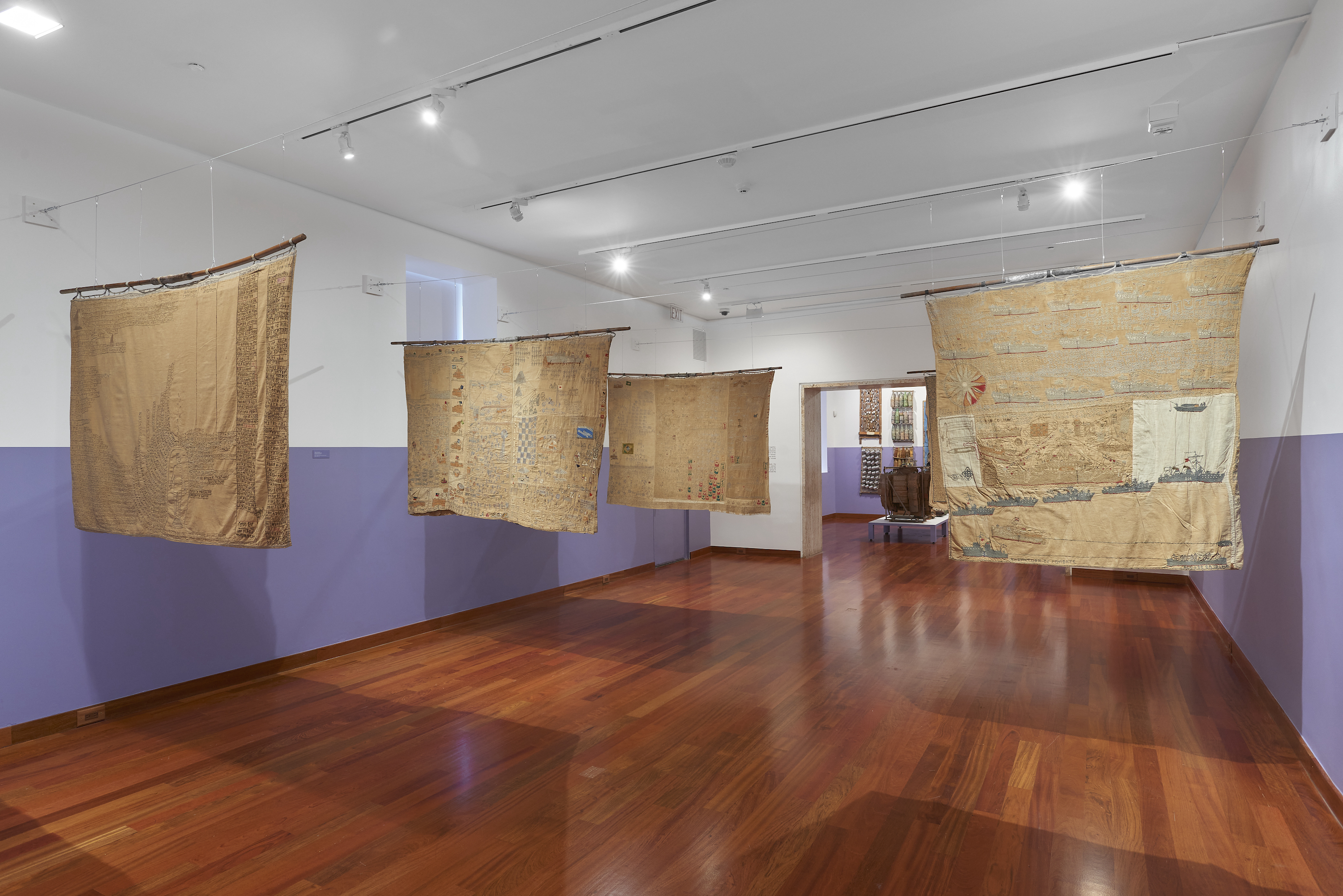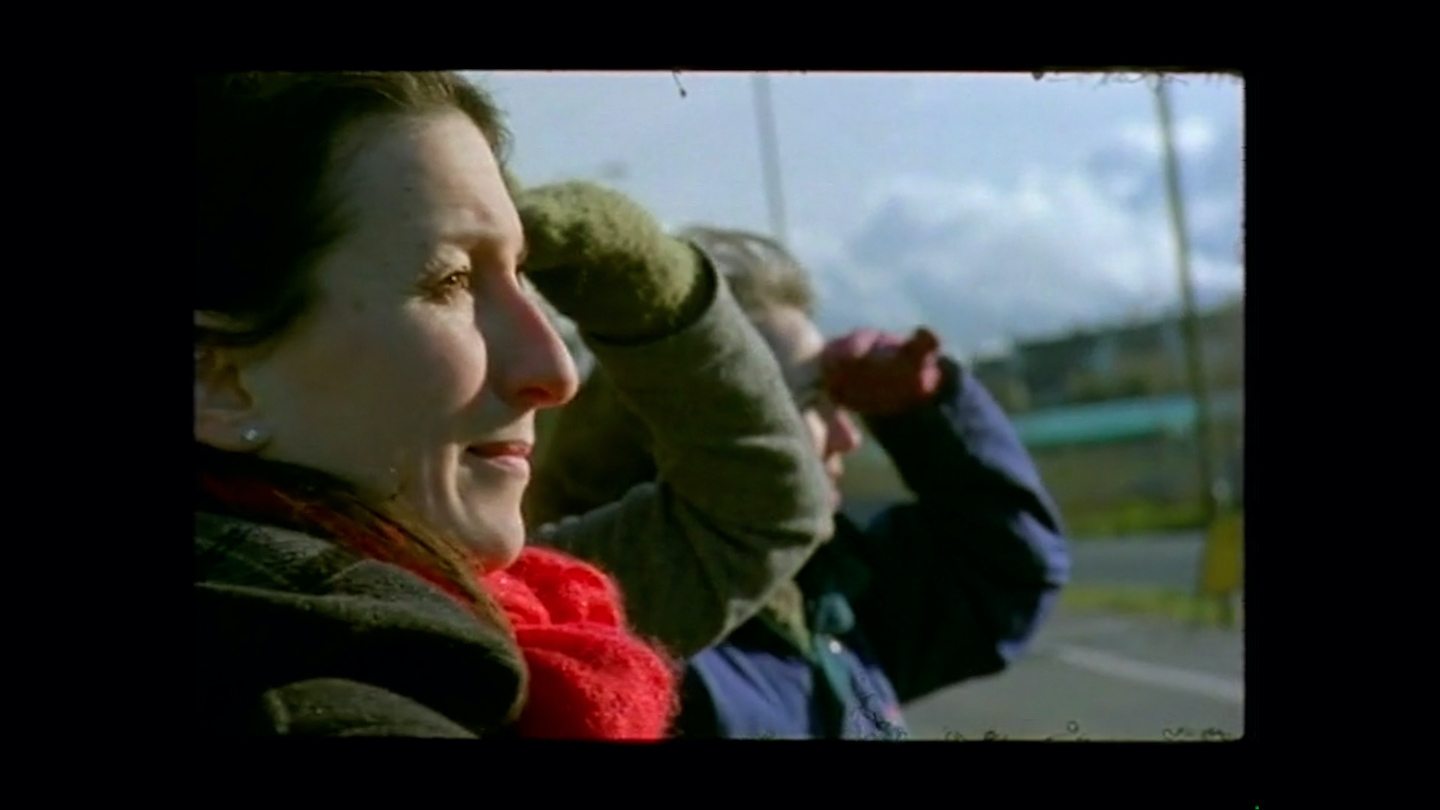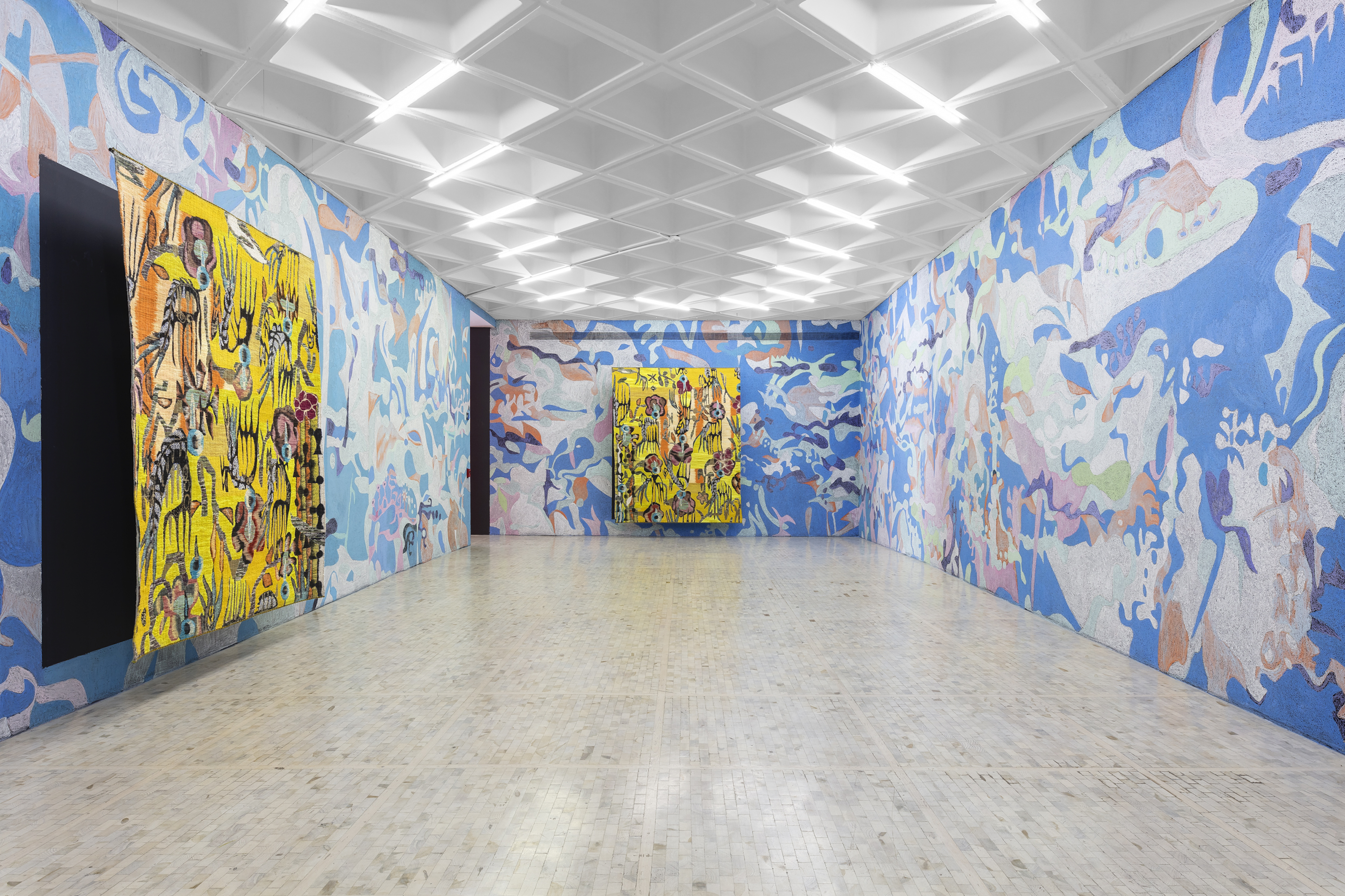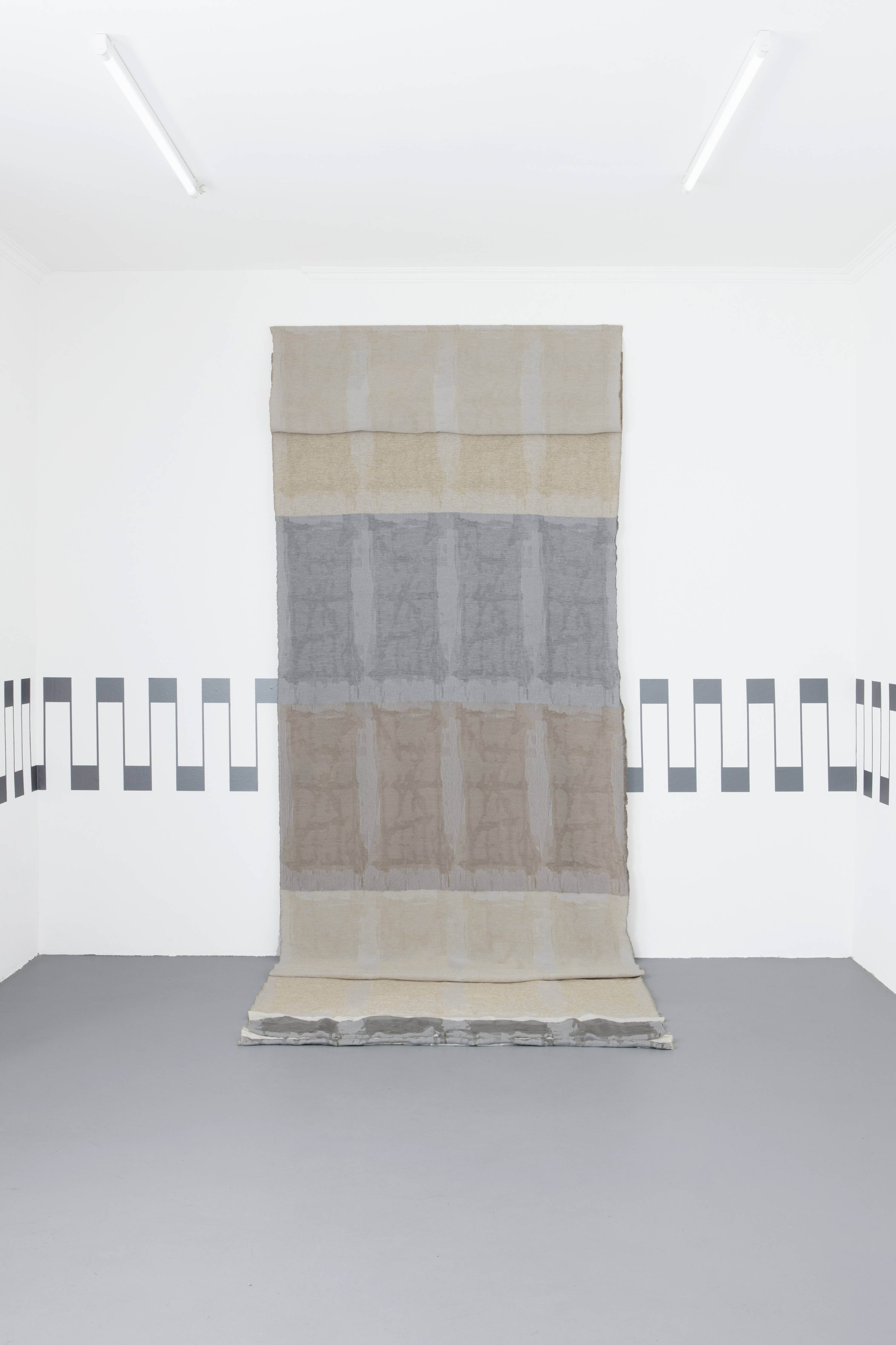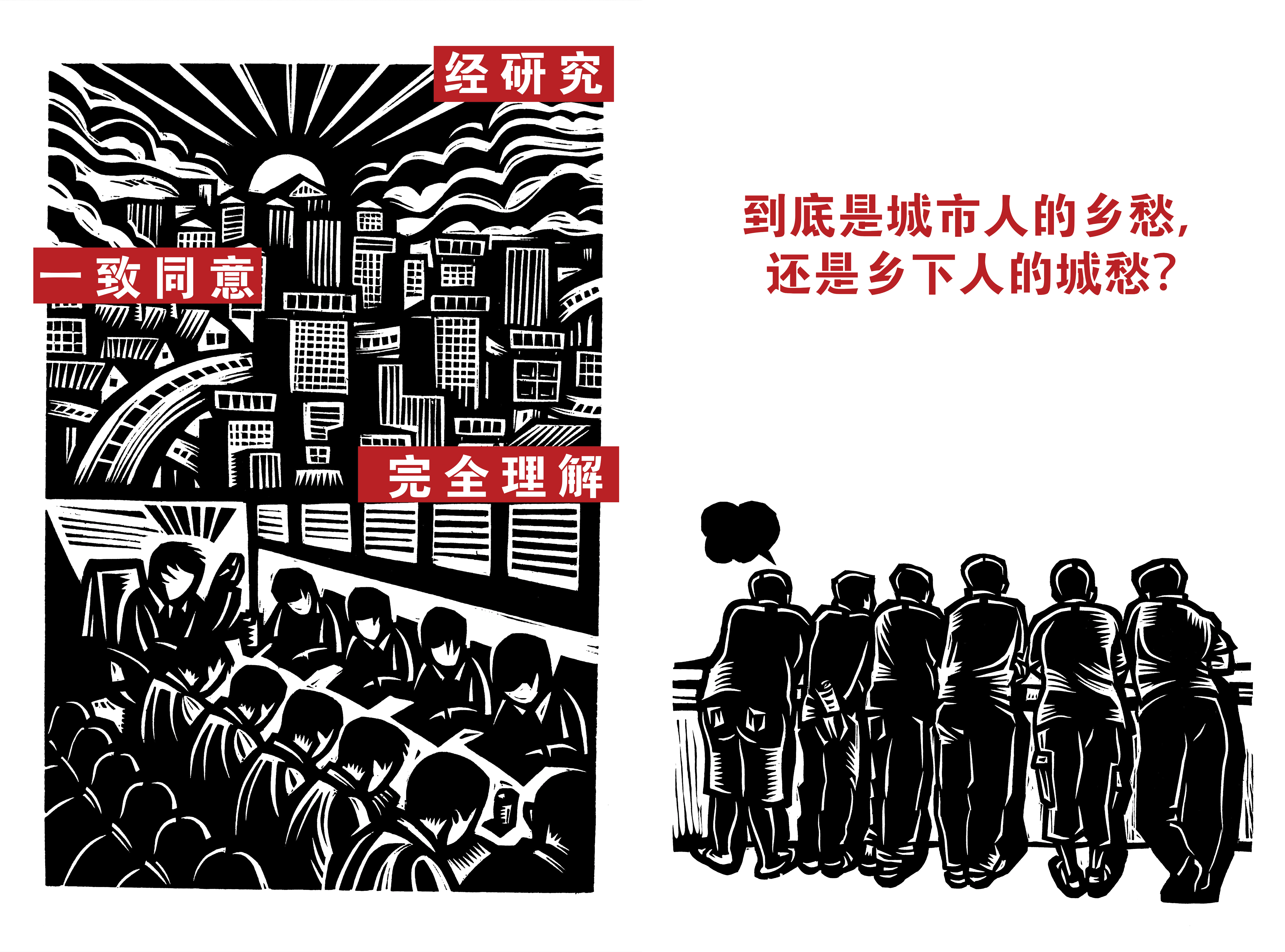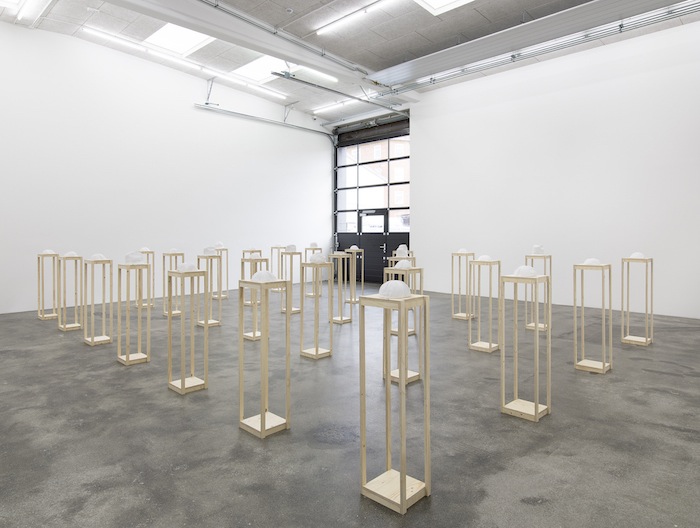The idea of the periphery implies a metropolitan center around which everything revolves. As cities become ever-more expensive and policed, they effectively turn their poorer citizens into an extrinsic workforce, pricing them out of central areas and forcing them to commute. Claudia Gutiérrez Marfull’s textiles capture the sorts of exurban landscapes that workers who live in the peripheries are likely to witness daily. Her delicate embroideries in “No hay paraíso sin serpientes” [There is no paradise without snakes], made with chunky acrylic and natural wool on Aida cloth, depict neglected areas of Puente Alto, the most populous commune in Chile, on the edge of Santiago.
In one of the two 2020 works whose shared title lends the show its name, Gutiérrez Marfull represents an overpass leading nowhere atop a dry stream bed using tight, colorful stitches. The weeds are tall, the concrete bridge mossy. Graffiti dots the area, as do a few trees. A few dark, elongated clouds cross the blue sky. In the second embroidery of the same title, a graffitied concrete wall obscures everything but the red roof of a beige building standing in the background. Beneath the gray sky, a couple of yellow trees sit in the corner. Brown, overgrown weeds and dirt dominate the foreground; the central feature is an old tire leaning on the ground. The composition is similar in the companion piece. Here, the work is divided into three horizontal sections. Along the top, a bright teal sky is interrupted by various trees. Across the middle is a ribbon of graffiti: a few bubble tags on a brick wall, a purple cartoony face and the letters AC—almost certainly the first half of an ACAB—with a classic anarchist circle-A. The foreground, taking up half of the image, is again dirt and weeds in different hues of dry.
A complement to these works, Poco se gana hilando, pero menos mirando (Little is earned by weaving but even less by looking, 2016–21), sits in another room on a long rectangular plinth painted, like the rest of the room, a bright pink. On the plinth are dozens of bendy, woven shapes. Some of them are modest: the silhouette of a broken bottle, a knife rendered in minuscule stitches, a belt, a segment of a chain, an extension cord. It wasn’t until I noticed the telltale car tire—deflated and mid-collapse—that it clicked: the piece is a time-consuming imitation of trash recreated in crochet. The silhouettes of interlocked cotton were infused with resin in order to retain their shape, but their flimsiness won in the end. When I saw them, they had wilted into a curious mass.
Critical commentary about Gutiérrez Marfull’s work has tended to promote it as unusual or exceptional by virtue of the fact that it beautifies these marginalized geographies, transforming them into delicate, pretty objects. Critics have argued that her work is aligned with marginality because textiles always are. These arguments allude to the near-invisibility in the contemporary art world of people from the big-city peripheries that she depicts. To my mind, such statements reveal more about the people making them than they do about the artist’s work. There are so many people from these areas creating significant art, and the fact that the contemporary art system prefers to discuss it in terms of its “exceptionality” feels, well, lazy. Surely more interesting questions can be asked of Gutiérrez Marfull’s art. I’m reminded of a quote by the artist and activist Ricardo Domínguez: “Our job as artists is to navigate the ruins yet to come.”
It’s meaningful that Gutiérrez Marfull dedicates so much time to representing her local entropy, the pervasive aesthetics of economic decay, using such intimate handwork. There’s also a quixotic quality to the task: committing depictions of ruin to a material that is notoriously destined to the same fate. I’m eager to see more of her work, and to know precisely what it is about our current ruin—not least its static domesticity—that moved Gutiérrez Marfull to reproduce it, stitch-by-stitch. What is it about this ancient but transient medium of textile that helps her, or us, navigate the ruins that are already here?
